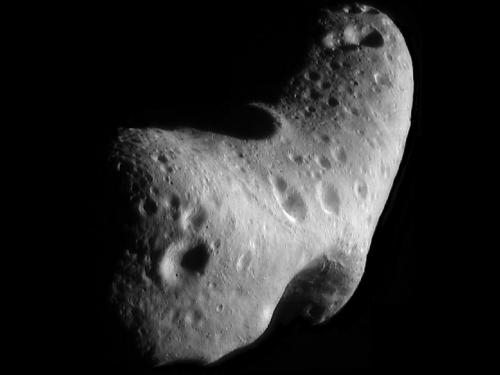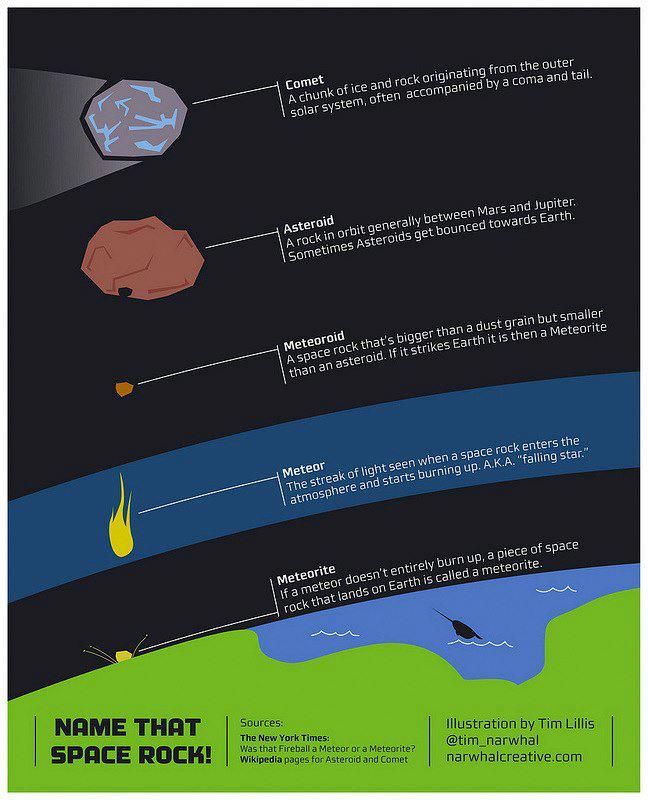
This is an hypothesis which astronomers are trying to test by gathering new data. Their work has some immediate repercussions: NASA is currently planning an "Asteroid Redirect Mission (ARM)" as part of America's next human spaceflight enterprise. Understanding the origins of asteroid sizes - and then identifying a good one for an astronaut to recover - are prime US goals.
Comment: This out dated hypothesis is slowly being re-evaluated in light of real cometary science.
"The fundamental difference between asteroids and comets is not their chemical composition, i.e. dirty, fluffy icy comets vs. rocky asteroids. Rather, as has long been put forward by plasma theorists, what differentiates 'comets' from 'asteroids' is their electric activity"
Earth Changes and the Human Cosmic Connection
For some in the mainstream astronomy community the penny is finally dropping: Mars moon Phobos may be a captured asteroid and recent discoveries are changing attitudes:
"Yet new information is already pouring in. What scientists have discovered is already starting to transform our understanding of Rosetta's target comet, 67P/Churyumov-Gerasimenko (C-G for short), and cometary science."
1. C-G looks nothing like we'd expectWhere's the ice 3 surprising comet facts we've already learned from Rosetta
2. The surface is hotter than we guessed, and surprisingly ice-free
3. Despite its dry surface, C-G expels an astronomical amount of water... but not on its dark side
The discovery rate of asteroids and comets has increased in recent years thanks to new technology detectors. The Solar System today is seen as teeming with activity, and filled with related, evolving small bodies (including asteroids) whose orbits and sizes are shaped by gravitational interactions with the giant planets, but also by other forces like collisions and radiation effects. Radiation effects include the evaporation of water ice or other volatiles, differential thermal expansion, and radiation pressure - and they are critical when addressing the issue of asteroid sizes. Because asteroids are irregularly shaped, the pressure of incident sunlight and also effect of their own outward radiation (which is unevenly directed) can cause them to spin and, when the spinning is fast enough, to break-up.
Comment: The same 'very fast rotation' rationale was also used by mainstream scientists to explain the million mile long glowing tail on asteroid P/2013 P5 and 62412 which "has a very fast rotation that likely shifts material around its surface, some of which may be emitted to form the comet-like appearance".
A "catastrophic disruption" is defined as the breakup of an asteroid into fragments each smaller than half the original mass. Traditionally small asteroids have been thought to be made in collisions between a parent body and a smaller projectile body, but these events seem to be very rare, both from observations and newer modeling. Renewed attention has recently been given to non-collisional break-up mechanisms like radiation effects, especially for asteroids smaller than a few hundred meters in diameter.
CfA astronomer Tim Spahr and his colleagues have completed a new set of calculations for catastrophic disruptions of main belt asteroids, building on new survey results of faint (that is, probably small) asteroids. They find that for asteroids about one hundred meters in diameter collisions are not the primarily cause of break ups - rapid rotation is. Moreover, because the rate of collisions depends on the numbers and sizes of objects but rotation does not, their results are in strong disagreement with previous models of collisionally-produced small asteroids.
Comment: Remember the dual event that took place on February 15th, 2013? Space agencies, 'experts' and the mainstream media reassured the general public that asteroid 2012-DA14 was due to safely pass by our planet. It did, but within hours another separate asteroid/comet fragment unexpectedly slammed into the atmosphere and exploded over the Russian city of Chelyabinsk.
More information:
"Observational Constraints on the Catastrophic Disruption Rate of Small Main Belt Asteroids," Larry Denneau, Robert Jedicke, Alan Fitzsimmons, Henry Hsieh, Jan Kleyna, Mikael Granvik, Marco Micheli, T. Spahr, Peter Vereš, Richard Wainscoat, W.S. Burgett, K.K.C. Chambers, P.W. Draper, H. Flewelling, M.E. Huber, N. Kaiser, J.S. Morgan, J.L. Tonry, Icarus, 245, 1, 2015. Links: ScienceDirect and arXiv.org.




Based on previous encounters in 2002/3, 2007 and 2011 I am expecting Itys to make an in-atmosphere pass of the Earth in about May 2015 +/-3 months. The local time of day should be in the range 8:00pm to 8:45pm. If it comes in prior to about 6:00pm Itys hits. Itys always travels SSE to NNW. How it appears depends upon local light conditions. As it is expected about early dusk theses days (I assume there is no unfortunate lunar perturbation of its exotic orbit) Itys will likely appear dark against the evening sky but fringed with ruddy orange flame at the "front and sides". Slightly ovoid (say 1.2:1 or so) the apparent size will depend critically upon its height and distance from the observer. The closer to overhead the bigger it will appear and it is likely to be between 1 and 5 lunar disks in size, with '1' representing the horizon + a few degrees. While Itys is quite slow at about 10.X miles per second it will still only be in view for seconds so observe carfully and take notes.